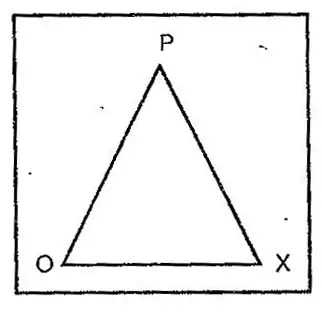Describe the Balance Theory of Heider.
Balance Theory of Heider:
As a psychologist, Heider was concerned with the way an individual organizes attitudes towards people and objects in relation to one another within that individual’s own cognitive structure. Heider postulated that unbalanced states produce tension and generate forces to restore balance. He says that “The concept of a balanced state designates a situation in which the perceived units and the experienced sentiments co-exist without stress”.
Heider’s paradigm focused on two individuals, a person (P), the object of the analysis, some other person (O), and a physical object, idea, or event (X). Heider’s concern was with how relationships among these three entities aorganized in the mind of one individual (P). Heider distinguished two types of relationships among these three entities, liking (L) and unit (U) relations (cause, possession, similarity, etc.). In Heider’s paradigm, “A balanced state exists if all three relations are positive in all respects or if two are negative and < one is positive”. All other combinations are unbalanced.
Heider’s balance-theory can explain why holding the same negative attitudes of others’ promotes closeness.
Let’s say you are the parent of a small child. Your baby comes home from kindergarten one afternoon bearing a gift. You tear into the crude wrapping and find — surprise! — a clay ashtray. It is easily the ugliest entity in the universe, and you don’t smoke. But your little artist stands there before you with a smile as broad as all outdoors and eyes sparkling with unbounded pride.
You say to your child “oh thank you so much, it’s so very beautiful, you sure are good at art, I love it, we’ll put it right here in the display case with the antique crystal collection!” What folks who haven’t gone through this don’t understand is that you meant every word.
Fritz Heider looks at it like this: You are the person (P), your child is the other (O), the clay ashtray is the third element in the triangle (X). And there are several relations among them:

There are two kinds of relations operating within the triangle:
Unit relations: Things and people that “belong together,” that in some fashion make a good Gestalt. In reference to people, we can think of them as belonging together if they share nationality, religion, social status, family membership, etc. that is, if they can be subsumed by some social construct. We see things as belonging to people if they are possessions or property or actions and the like.
Sentiment relations: Our evaluations of things and people, loving, hating, accepting, rejecting, worshiping, condemning, etc. Heider simplifies matters for our purposes by limiting sentiment to liking and disliking.



